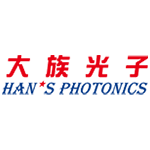Lasers and lasers
1) The origin and development of lasers
Laser (light amplification by stimulated emission of radiation, referred to as laser) and atomic energy, computers, semiconductors together as the 20th century “four new inventions”. Laser is a light produced by artificially stimulating a specific substance with strong energy such as light or electricity. The principle is that the electrons in an atom absorb energy and then jump from a low energy level to a high energy level, and the n fall back from the high energy level to a low energy level, releasing energy in the form of photons, resulting in a collimated, monochromatic, coherent, directional beam of light.
The theoretical basis of laser originated from the physicist Albert Einstein, who put forward the theory of “stimulated radiation” in 1917, and the American scientists (Towns) and (Sholok) put forward the “laser principle” in 1958, which means that matter is subjected to a laser beam in the presence of a molecule with its molecular intrinsic properties. In 1958, American scientists (Towns) and (Shollo) put forward the “laser principle”, that is, when matter is excited by the same energy as its molecular intrinsic frequency of oscillation, it will produce a strong light that does not diverge – a laser light, for which they were awarded the Nobel Prize for Physics in 1964 and 1981, respectively. 1960, for the first time, lasers were successfully manufactured, and Meiman of Hughes Laboratory utilized the ruby rod with a diameter of 6mm and a length of 45mm to produce a beam of light with a wavelength of 0.6943 μm, which is the most light beam that mankind has ever obtained. The first laser beam. In the same year, Meiman successfully developed the world’s first ruby laser, which was highly regarded in the field of laser research and ushered in a new era in the field of lasers.
In the 21st century, the application of laser technology has stepped into the fast lane of development, and the laser industry has formed a certain scale of industrial chain. China has a large number of laser equipment integrators, but also one of the most important markets for laser applications. In addition, the country continues to vigorously promote the development of intelligent manufacturing industry, through the release of policy planning and industry standards to effectively promote the development of the industry and technology enhancement. As the process of machine replacement continues to accelerate, laser technology continues to innovate, industrial robots combined with laser technology to form a new industrial processing technology, will help expand the field of laser applications, the laser industry to provide a new impetus for development.
2) Laser principle and characteristics
(1) Laser generation
Microscopic particles have a specific series of energy levels microscopic particles have a specific series of energy levels (usually these levels are discrete), any moment particles can only be in a state corresponding to a certain energy level (i.e., in a certain energy level). When a particle acquires an excitation energy equal to the difference between the two energy levels due to heat, collision or radiation, it leaps from an initial state of lower energy to an excited state of higher energy, but is unstable and has a tendency to return spontaneously to a steady state. After releasing the corresponding energy, the particle automatically returns to the initial state. Types of leaps of particles. There are three types of energy leaps of particles – spontaneous absorption, spontaneous radiation and excited radiation.
① spontaneous absorption: in the lower energy level of the particle in the external excitation (i.e., with other particles have energy exchange interactions, such as inelastic collisions with photons) absorbed energy, jump to the energy corresponding to the higher energy level, this jump is called spontaneous absorption.
② spontaneous radiation: the excited state into which the particle is excited, not the stable state of the particle. Such as the existence of a lower energy level can accept particles, even if there is no external action, the particles also have a certain probability of spontaneous excitation from the high energy level (E2) to the low energy level base state (E1) jump, while radiating the energy of E2 E1 photons, photon frequency v = (E2 – E1) / h (which, h is Planck’s constant), this radiation process is called spontaneous radiation. Numerous atoms with spontaneous radiation issued by the light, does not have the phase, polarization state, the direction of propagation on the consistency of the physical said incoherent light.
③Excited radiation: In 1917, Albert Einstein pointed out theoretically that, in addition to spontaneous radiation, particles in the high energy level E2 can also be another way to jump to a lower energy level E”. When the frequency v = (E2 an E1) / h photons, will also trigger a certain probability of particles, quickly from the energy level E2 jumped to the energy level E1, while radiating a foreign photon frequency, phase, polarization and propagation direction of the same photon, this process is called stimulated radiation.
Laser is formed through the atomic excited radiation luminescence and resonance amplification, the atom has some discontinuous distribution of energy electrons, these energy electrons in the orbit closest to the nucleus of the atom is stable when rotating, this time the atom is in the energy level for the ground state. When there is external energy transfer, the electron orbit radius expansion, the atomic internal energy increased, was excited to a higher energy level, which is called the excited state or high-energy state. Being excited to a high energy level of the atom is unstable, always trying to go back to the low energy level to go. Atoms in the jump, the energy difference in the form of light radiation, this is the atom luminescence, is the spontaneous radiation of light, also known as fluorescence. If induced by an external photon during the atomic leap, the atom will emit a photon with exactly the same frequency, phase, propagation direction, and polarization state as the human-emitted photon, which is excited radiated light.
After an atom is excited to a high energy level, it will quickly jump back to a low energy level, and the time it stops at the high energy level is called the average lifetime of the atom at that energy level. Atoms in the external energy excitation, the number of atoms in the high energy level is greater than the number of atoms in the low energy level, this state is called the number of particles inversion. At this time, the atoms in the stimulation of foreign photons, produced by excited radiation of light, these photons through the role of optical plasma cavity to produce amplification, excited radiation is getting stronger and stronger, the beam density is increasing, the formation of a laser.
From the above laser principle can be seen, any type of laser should include three basic elements: can be excited by the working material, the working material to realize the number of particles reversed (i.e., there is an incentive energy), optical resonant cavity.
After years of development, China’s laser application technology has advanced by leaps and bounds. However, at present, China’s manufacturing productivity and manufacturing powerhouse there is still a gap, China’s laser technology in the manufacturing industry, especially in the equipment manufacturing industry in the application of a low proportion of only 30% (the United States, Japan, Germany laser technology in the equipment manufacturing industry in the application of the proportion of more than 40%), which is China’s industrial system transformation and upgrading is slow for a reason. With the continuous expansion of China’s laser applications and the application of the depth of the increase, the laser industry potential alternative space is very broad.
(2) Properties of laser light
Laser is formed through the atomic excited radiation luminescence and resonance amplification, the atom has some discontinuous distribution of energy electrons, these energy electrons in the orbit closest to the nucleus of the atom is stable when rotating, this time the atom is in the energy level for the ground state. When there is external energy transfer, the electron orbit radius expansion, the atomic internal energy increased, was excited to a higher energy level, which is called the excited state or high-energy state. Being excited to a high energy level of the atom is unstable, always trying to go back to the low energy level to go. Atoms in the jump, the energy difference in the form of light radiation, this is the atom luminescence, is the spontaneous radiation of light, also known as fluorescence. If induced by an external photon during the atomic leap, the atom will emit a photon with exactly the same frequency, phase, propagation direction, and polarization state as the human-emitted photon, which is excited radiated light.
After an atom is excited to a high energy level, it will quickly jump back to a low energy level, and the time it stops at the high energy level is called the average lifetime of the atom at that energy level. Atoms in the external energy excitation, the number of atoms in the high energy level is greater than the number of atoms in the low energy level, this state is called the number of particles inversion. At this time, the atoms in the stimulation of foreign photons, produced by excited radiation of light, these photons through the role of optical plasma cavity to produce amplification, excited radiation is getting stronger and stronger, the beam density is increasing, the formation of a laser.
From the above laser principle can be seen, any type of laser should include three basic elements: can be excited by the working material, the working material to realize the number of particles reversed (i.e., there is an incentive energy), optical resonant cavity.
(2) Properties of laser light
Ordinary light source photons are different, will be dispersed in all directions. The photons in the laser are induced to emit, the optical properties and the pace is extremely consistent, and the energy is concentrated, has a strong power. Because of the main excited radiation, and light waves have a high degree of the same frequency, propagation direction, polarization and phase, so the laser has a high brightness (energy concentration, temperature is very high), high directionality (dispersion is very small, high power density), high monochromatic (wavelength distribution range is very narrow, the color is very pure and coherent (in the wavelength, frequency, polarization direction is basically the same), and so on a number of excellent characteristics.
After years of development, China’s laser application technology has advanced by leaps and bounds. However, at present, China’s manufacturing productivity and manufacturing powerhouse there is still a gap, China’s laser technology in the manufacturing industry, especially in the equipment manufacturing industry in the application of a low proportion of only 30% (the United States, Japan, Germany laser technology in the equipment manufacturing industry in the application of the proportion of more than 40%), which is China’s industrial system transformation and upgrading is slow for a reason. With the continuous expansion of China’s laser applications and the application of the depth of the increase, the laser industry potential alternative space is very broad.
(2) Properties of laser light
Laser is formed through the atomic excited radiation luminescence and resonance amplification, the atom has some discontinuous distribution of energy electrons, these energy electrons in the orbit closest to the nucleus of the atom is stable when rotating, this time the atom is in the energy level for the ground state. When there is external energy transfer, the electron orbit radius expansion, the atomic internal energy increased, was excited to a higher energy level, which is called the excited state or high-energy state. Being excited to a high energy level of the atom is unstable, always trying to go back to the low energy level to go. Atoms in the jump, the energy difference in the form of light radiation, this is the atom luminescence, is the spontaneous radiation of light, also known as fluorescence. If induced by an external photon during the atomic leap, the atom will emit a photon with exactly the same frequency, phase, propagation direction, and polarization state as the human-emitted photon, which is excited radiated light.
After an atom is excited to a high energy level, it will quickly jump back to a low energy level, and the time it stops at the high energy level is called the average lifetime of the atom at that energy level. Atoms in the external energy excitation, the number of atoms in the high energy level is greater than the number of atoms in the low energy level, this state is called the number of particles inversion. At this time, the atoms in the stimulation of foreign photons, produced by excited radiation of light, these photons through the role of optical plasma cavity to produce amplification, excited radiation is getting stronger and stronger, the beam density is increasing, the formation of a laser.
From the above laser principle can be seen, any type of laser should include three basic elements: can be excited by the working material, the working material to realize the number of particles reversed (i.e., there is an incentive energy), optical resonant cavity.
(2) Properties of laser light
Ordinary light source photons are different, will be dispersed in all directions. The photons in the laser are induced to emit, the optical properties and the pace is extremely consistent, and the energy is concentrated, has a strong power. Because of the main excited radiation, and light waves have a high degree of the same frequency, propagation direction, polarization and phase, so the laser has a high brightness (energy concentration, temperature is very high), high directionality (dispersion is very small, high power density), high monochromatic (wavelength distribution range is very narrow, the color is very pure and coherent (in the wavelength, frequency, polarization direction is basically the same), and so on a number of excellent characteristics.
3)Laser structure and classification
(1) The principle and structure of laser
Laser is a laser generation device, mainly composed of gain medium, pump source, optical resonant cavity. Gain medium refers to the working substance that can amplify the light, the pump source is the excitation source of the laser, and the optical resonant cavity is the circuit between the pump source and the gain medium. In the working state, by absorbing the energy generated by the pump source, the gain medium jumps from the ground state to the excited state. Since the excited state is unstable, at this time, the gain medium will release energy to return to the ground state. In this process of energy release, the gain medium produces photons, and these photons in the energy, wavelength, direction of propagation is highly consistent, they are in the optical resonance cavity constantly reflecting, reciprocating motion, and finally through the semi-reflector shot out of the laser, forming a laser beam.
(2) Classification of Lasers
There are more types of lasers, and there are four common classifications, namely, according to the different classifications of gain medium, output power, output wavelength, and working mode, which can be divided into various types.
Different gain medium determines the laser wavelength, output power and application areas. According to the different gain media, they can be divided into gas, liquid, solid lasers, etc., as shown in Table 1.1. Among them, fiber laser refers to the laser doped with rare earth element glass fiber as the gain medium, belongs to a kind of solid-state laser, because of the shape of the gain medium and has the typical technical and industrial advantages, the industry is generally separated from other solid-state lasers for research.
According to the different output power, it can be divided into low power (0~100W), medium power (100~1000W), high power (more than 1000W) lasers, and different power lasers are applicable to different scenes.
According to the different output wavelengths, they can be divided into infrared lasers, visible light lasers, ultraviolet lasers, etc. The wavelength range of light absorbed by different structural substances is different.
According to the different ways of working, they can be divided into continuous lasers and pulsed lasers. Continuous lasers can output continuously for a long period of time, with stable operation and high thermal effect. Pulsed lasers output in the form of pulses and are mainly characterized by high peak power and low thermal effect. According to the pulse time, pulsed lasers can be further classified into milliseconds, microseconds, nanoseconds, picoseconds and femtoseconds. Generally speaking, the shorter the pulse time, the higher the single pulse energy, the narrower the pulse width, and the higher the processing precision.
Fiber laser has high photoelectric conversion efficiency, simple structure, good beam quality and other characteristics, has become the mainstream direction of the development of micro-optical technology and the main force of laser industry applications. Typical fiber laser mainly consists of optical system, power supply system, control system and mechanical structure of four parts. Among them, the optical system consists of pump source, gain fiber, fiber grating, pump beam combiner and laser transmission cable and other optical devices formed by fusion bonding, and in the power supply system, control system drive and monitoring to achieve laser output.






